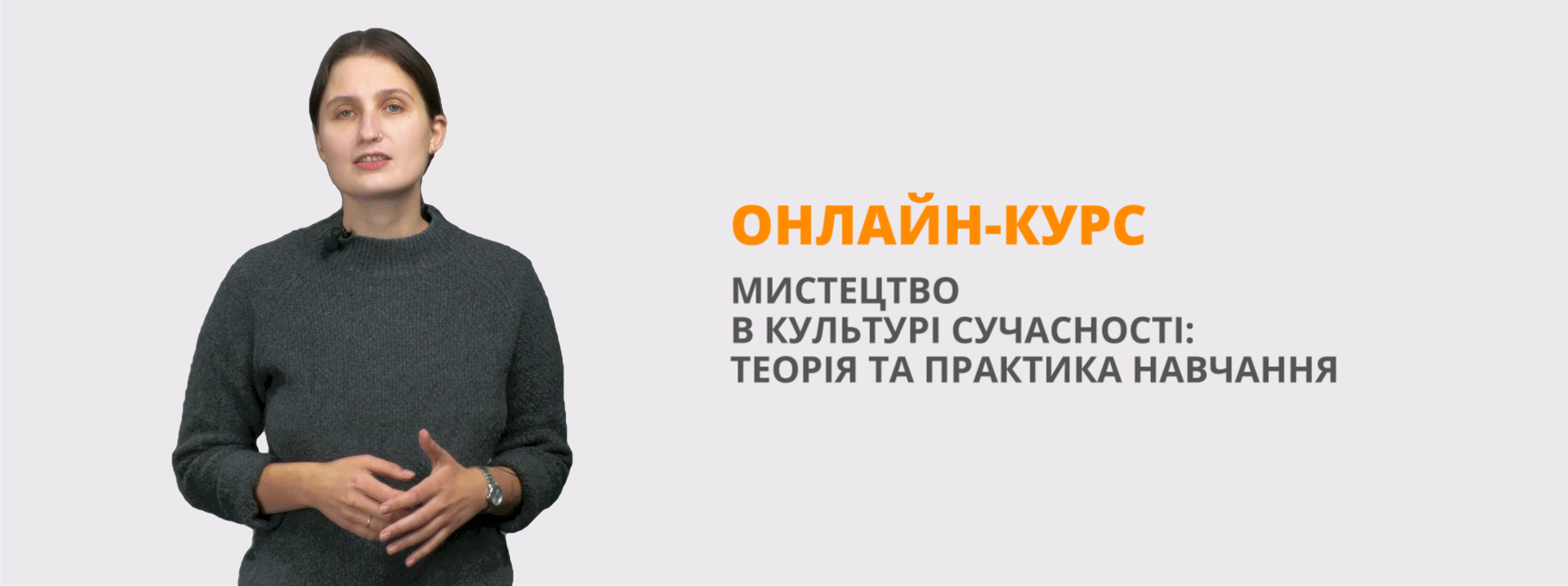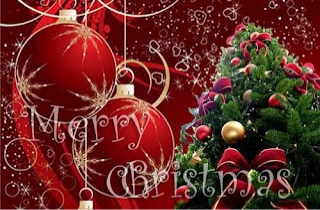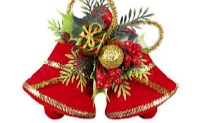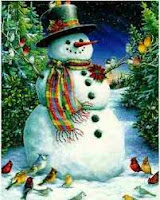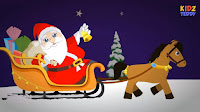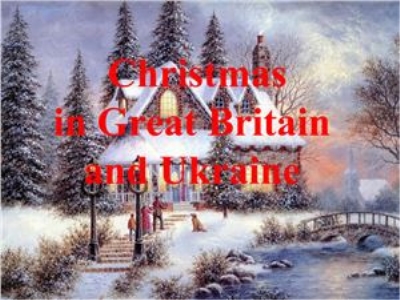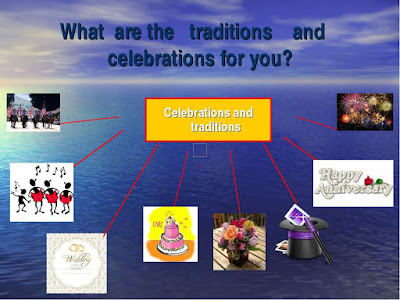Урок-дискусія з елементами змагання “Christmas From Around the World” Form 7
Урок-дискусія з елементами змагання “Christmas From Around the World” Form 7
Teacher: Vita Serhiivna Sydorenko
The Topic: Christmas From Around the World
Objectives: - to master phonetic and speaking drills;
- to activate pupils’ vocabulary on the topic of the lesson;
- to deepen their knowledge of celebrating the holiday;
- to cultivate pupils’ taste and stimulate them to know more about cultures to promote
of English-speaking countries;
- to develop reading drills to get more information; -
- to develop speaking abilities in monologues and dialogues;
- to practice working with the Internet.
Equipment: a tape recorder, pictures to the song, a blackboard, Christmas sayings, cards with different task, the world map, computers.
PROCEDURE
1. Introduction. Greeting
T: Good morning, children! P: Good morning, teacher! T: Glad to see you. Sit down. Are you ready to start? P: Yes, sure. (The pupils are listening to a traditional English song “Jingle Bells”.) T: Nice tune, isn’t it? Who doesn’t know this common melody? But do you know who wrote this song?-John S.Pierpont. So as you guess today we are going to continue our talking about the Christmas traditions. We have already known a lot about them earlier. But today we’re going to broad your knowledge more on this topic, to enrich the stock of your words and we’re preparing for the project “THE CHRISTMAS TRADITION I WOULD LIKE TO USE IN MY FAMILY”.
2. Warming-up
T: Now let’s return to our song. Listen to “Jingle Bells” once more attentively, especially pay your attention to the text of the song and choose the picture which best corresponds to the song. Guess the meaning of the unknown words.
(The teacher is giving the cards with the text, explaining the meaning of some words. Then the pupils and the teacher are singing the song together…)
Choose the pictures which best corresponds to the song,
Jingle Bells
1. Dashing through the snow, in a one –horse open sleigh,
O’er the field we go, laughing all the way.
Bells on Bobtail ring , making spirits bright,
What fun it is to ride and sing a sleighing song tonight?
Chorus: Jingle bells, jingle bells, jingle all the way.
Oh! What fun it is to ride in a one-horse open sleigh!
2. A day or two ago, I thought I’d take a ride,
And soon Miss Fannie Bright was sitting by my side.
The horse was lean and lank, misfortune was his lot.
He got into a snowdrift bank – and we? We got upsot!
Chorus: Jingle bells, jingle bells, jingle all the way.
Oh! What fun it is to ride in a one-horse open sleigh!
3. So now the moon is bright, enjoy it while you’re young
. Invite your friends tonight to sing this sleighing song
. Just get a bob-tailed nag and give him extra feed.
Then hitch him to an open sleigh – and crack! You’ll take the lead.
3. Vocabulary practice
T: I’d like you to say all you know about New Year and Christmas traditions. We’ve got a magic box with “happy faces”. You’ll get a point for every correct answer. We’ll count all your points at the end of the lesson and you’ll get a mark.
1. Are there many holidays in Great Britain? What are they?
2. What is the most popular holiday in Great Britain?
3. When is Christmas celebrated there?
4. Is New Year as popular as Christmas in Great Britain?
5. What Christmas traditions do you know?
6. Do you happen to know which is the traditional Christmas song in Britain?
7. What is the main Christmas meal ?
4. Oral Practice
Different Traditions – Different Countries
Jigsaw Reading
T: Different countries – different traditions. Christmas traditions in Great Britain have a long history. Now we are going to read the text about it. Let’s unite into 2 groups. Both groups have the same text, but some information in it is missed. You should get this missing information by asking questions. The first group managed the task will get an extra point.
Jigsaw reading (Teacher’s sheet)
CHRISTMAS
Each country has its own customs, traditions, holidays and important days in its history. Talking about holidays in Ukraine we should talk about everybody’s favourite New Year Holiday. People think that at night on New Year’s Eve the old year with all its troubles leaves us forever and the new year with all our hopes and expectations knocks at our doors.
At Christmas people remember when Jesus Christ was born and the Christian religion started. Jesus was born in the town of Bethlehem about two thousand years ago. Nobody knows exactly when Jesus was born , although the Christians everywhere in the world celebrate this holiday on December 25.
The Christmas holiday begins on 24 December: Christmas Eve. People finish their shopping, cover the presents in special paper and put them under the tree. Children leave stockings for Santa Claus ( in Britain he is usually called Father Christmas )by the fire because Santa Claus comes down the chimney and then go to bed. Some children leave a drink and a mince pie for Santa and some vegetables for his animals.
Christmas Day (December 25 ) is a holiday. Christmas dinner is in the afternoon and is the biggest meal of the day. Before they start to eat people pull crackers. The crackers make a loud noise, and have a small game and paper party hat inside. Dinner is usually turkey with lots of winter vegetables and then hot mince pies or a Christmas pudding.
In the evening people eat cold meat and Christmas cake, fruit and nuts. Boxing day ( 26 December ) is also a holiday in Britain. In the 19th century rich people gave boxes to their workers on Boxing Day with presents inside.
Another British tradition is the pantomime. A pantomime is a kind of play with children’s story and lots of music and songs. There is usually a man who wears women’s clothes and plays an old woman. “ She” is not very beautiful, but makes everyone laugh. There is also a “bad” person and every time when the bad person comes out the people usually say “Boo!” or “Hiss!” very loudly.
The Christmas season ends on the twelfth day after December 25, which is 6 January. Most people take down their Christmas trees and decorations by this date and some people think it is bad luck not to do that.
Jigsaw reading (Group A )
CHRISTMAS
Each country has its own customs, traditions, holidays and important days in its history. Talking about holidays in Ukraine we should talk about everybody’s favourite New Year Holiday. People think … (what?) and the new year with all our hopes and expectations knocks at our doors.
At Christmas people remember when Jesus Christ was born and the Christian religion started. Jesus was born … ( where?) about two thousand years ago. ( Who?) knows exactly when Jesus was born, although the Christians everywhere in the world celebrate his birthday on December 25.
The Christmas holiday begins on 24 December: Christmas Eve. People finish their Christmas shopping, cover… ( what?) in special paper and put them under the trees. Children leave their stockings for Santa Claus ( in Britain he is called … ( how?)) by the fireplace because Santa Claus comes down the chimney and then go to bed. Some children leave a drink and a mince pie and some vegetables … (who?).
Christmas Day ( 25 December) is a holiday.
Christmas dinner is in the afternoon and is the biggest meal of the day. Before they start to eat people pull crackers… (why?) and have a small game and a (what?) party inside. Dinner is usually turkey with lots of winter vegetables and then hot mince pies or a Christmas pudding. In the evening people eat cold meat, a Christmas cake, fruit and nuts. Boxing Day (26 December) is also a holiday in Britain. In the 19th century rich people gave boxes to their workers on Boxing Day with presents inside.
Another British tradition is the pantomime. A pantomime is a kind of play with a children’s story and lots of music and songs. There is usually a man ( what kind of…?). There is also a “bad” person in the story. Every time when the bad person comes out the people say “Boo!” or “Hiss!” very loudly. The Christmas season ends on the twelfth day after 25 December, which is 6 January. Most people take down their Christmas trees and decorations by this date… (why?)
Jigsaw reading ( Group B )
CHRISTMAS
Each country has its own customs, traditions, holidays and important days in its his history. Talking about holidays in Ukraine we should talk about everybody’s favourite New Year Holiday. People think that at night on New Year’s Eve the old year with all its troubles leaves us forever and ( what?) knocks at our doors.
At Christmas people remember when Jesus was born and the Christian religion started. Jesus was born in the town of Bethlehem … ( when?)
Nobody knows exactly when Jesus was born , although the Christians everywhere in the world celebrate his birthday on December 25.
The Christmas holiday begins on 24 December: Christmas Eve. People finish their Christmas shopping, cover the presents in special paper and put them…(where?). Children leave their stockings for Santa Claus ( in Britain he is called Father Christmas) by the fireplace (why?) and then go to bed. Some children leave ( what?) for Santa Claus and his animals.
Christmas Day (25 December) is a holiday.
Christmas dinner is in the afternoon and is the biggest meal of the day. Before they start to eat people pull crackers. The crackers make a loud noise and have a small game and paper party hat inside. Dinner is usually…(what?)
In the evening people eat …( what?)
Boxing Day (26 December) is also a holiday in Britain. ( When? )rich people gave boxes to their workers with presents inside.
Another British tradition is the pantomime. A pantomime is a kind of play with a children’s story and lots of music and songs. There is usually a man who wears women’s clothes and plays an old woman. “She” is not very beautiful but makes everyone laugh. There is also (what kind of ?) person in the story. And every time when the bad person comes out the people say (what? and why?).
The Christmas season ends (when?). Most people take down their Christmas trees and decorations by this date and some people think it is bad luck not to do it.
Role-play Microphone “ The Bridge of Friendship”
T: Some traditions look like the same in our country. What Christmas traditions do you know? Imagine that you are the members of the international meeting “The Bridge of Friendship” between the Ukrainian and British students. The theme of your meeting is a discussion of Christmas traditions in your native countries. While the discussing you should complete the table.
So, now tell us what are the traditions and celebrations of Christmas in your families.
5. Working on computers. Searching information in the Internet
T: So, we have already come to our main work for today – preparing for the project “The Christmas tradition I would like to use in my family”. But at first you need to get to know some information about Christmas traditions in different countries. This kind of information you can find anywhere but you need a lot of time. But with our helper – a computer and the Internet you’ll find it very quickly. Now let’s start. To do this kind of work we’re going to the site http://www.zuzu.org/daze.html
Are you ready? Look! In their own words ZuZu readers share the memories and experiences that make their Christmas holidays unique.
The first row will read the letters from European countries, the second row will read the letters from Asian countries, from Australia and New Zealand, and the third row will read the letters from American countries.
(The pupils are reading the children’s letters from different continents, then they are exchanging this information in their groups and preparing to inform the pupils from another groups.)
T: Now we’re going to travel a little and refresh your new information. Please come up to the map, show the country and tell us about its Christmas traditions. What do you think – what is the funniest tradition? The most interesting? What tradition would you like to use in your family? Tell us about traditions of the following countries. Please, come up to the map.
European countries.
1-Scotland
2-Italy
3-France
4- Denmark
5- Hungary
Asian countries
6- Japan
7- India
Australia and Oceania
8- Australia
9- New Zealand
American countries
10- Brazil
11- Mexico
6. Summing-up.
Home Assignments
T: Time’s up unfortunately. Now let’s count your points. Today at our lesson we have known a lot of interesting and useful information from around the world. So at home you should make the project “ The Christmas tradition I would like to use in my family”. You can do it on a piece of paper; you can make a book under its name. Use the information you’ve searched today. You may add something more, you have richer imagination. You can use your computers at home and print your project. It would be interesting and funny if you glue some photos and pictures. And tomorrow we’ll look at your works, listen to you and I’ll get you marks in all the work. Clear? Our lesson is over. Thank you.
Now I’d like to wish you Merry Christmas and Happy New Year! Have a good time on your holidays! See you in January! Feliz Natal (in Brazil) Tchestita Koleda (in Bulgaria) Gun Tso Sun Tan (in China) Joyeux Noel (in France) Kala Christouyenna (in Greece) Buone Feste Natalizie (in Italy) Shinnen omedeto. Kurisumasu Omedeto (in Japan).

про публікацію авторської розробки
Додати розробку
